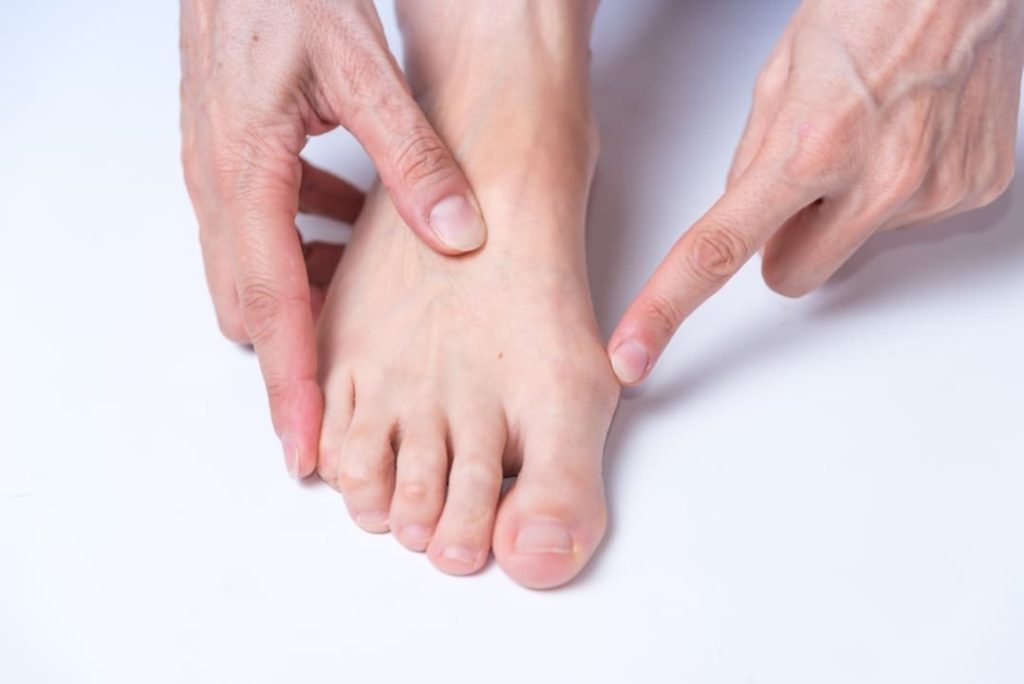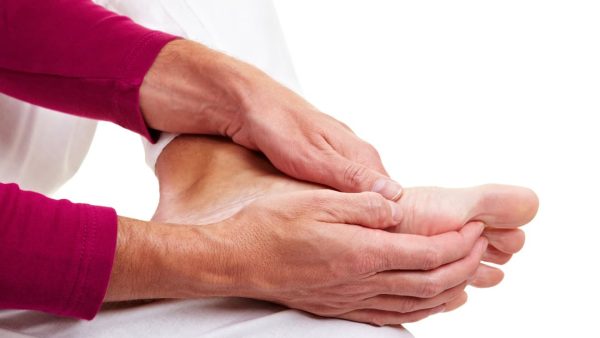Looking for Expert-Level VA Claim Answers?📱Call Us Now! 737-295-2226
If you’re dealing with painful bunions from your time in service, a hallux valgus VA rating could get you disability compensation.
Hallux valgus, or bunion, can result from overuse, ill-fitting boots, or service-related injuries, and it can significantly impact your mobility and daily life.
In this post, we break down how the VA rates hallux valgus, how to strengthen your claim, and what to know about bilateral ratings and secondary conditions.
Table of Contents
Summary of Key Points
- The VA rates hallux valgus under diagnostic code 5280 in the musculoskeletal rating schedule.
- A hallux valgus VA rating is typically 10% for each foot if surgery was required with resection of the metatarsal head or if the condition is severe enough to be rated as equivalent to amputation of the great toe.
- If both feet are affected and meet the criteria, you may qualify for a 10% rating for each foot, potentially boosting your overall compensation.
What is Hallux Valgus?

Hallux valgus is the medical term for a bunion, a bony bump at the base of the big toe. It causes the toe to angle inward, often leading to swelling, stiffness, and pain while walking.
While you can often manage mild bunions with proper footwear, more severe cases may require surgery.
The specific surgery depends on the severity of the bunion and the presence of joint damage or deformity.
Hallux Valgus VA Rating
The VA rating for hallux valgus falls under 38 CFR § 4.71a, Diagnostic Code 5280.
| 5280 Hallux valgus, unilateral | VA Disability Rating |
| Operated with resection of metatarsal head | 10% |
| Severe, if equivalent to amputation of great toe | 10% |
Bilateral Hallux Valgus VA Rating
If both feet are affected and rated at 10% each, the VA calculates your overall disability rating using the bilateral factor, a formula that slightly increases your combined rating to account for the impact on both lower extremities.
Each foot is rated separately, so the maximum VA disability rating for bilateral hallux valgus is 20%.
However, even a 10% rating can boost your overall combined rating and may qualify you for additional benefits, especially if you have other service-connected foot or joint conditions.
Check Out The 8 BEST 10% VA Disability Benefits
Proving Service Connection
To get a VA rating for hallux valgus, you’ll need to prove your condition is service-connected.
This involves:
- A current diagnosis
- An in-service event, injury, aggravation, or illness
- A medical nexus (link) between the current diagnosis and the in-service event, injury, aggravation, or illness.
How to File a VA Claim for Hallux Valgus
To qualify for a hallux valgus VA rating, you must file a VA claim using VA Form 21-526EZ.
You can file a VA claim:
- Online (Generally, the quickest method!)
- By mail
- Via fax
- In person at a VA regional office
When filing for hallux valgus, make sure to include all relevant medical evidence, like surgical reports, X-rays, and records of any treatments or devices used to manage your condition.
Pro Tip: Strong, detailed documentation may speed up your VA claim and boost your chances for a fair rating.
Related Post: How to File a VA Claim Online
VA Secondary Conditions to Bunions
You may also qualify for secondary service connection if your bunions cause or worsen other conditions.
These can include:
- Arthritis of the toes
- Gait abnormalities
Pro Tip: Be sure to include medical evidence showing how these issues are caused or aggravated by your hallux valgus.
Related Post: How Are VA Secondary Conditions Calculated?
Conclusion
You may qualify for a hallux valgus VA rating if your condition is service-connected. Most ratings are 10%, but you could receive a higher rating if both feet are affected or if it causes a secondary condition.
Don’t forget the value of strong medical evidence and clear documentation; it may strengthen your claim, speed up the process, and get you the benefits you rightfully deserve.
Want Expert-Level Support for Your VA Disability Claim? WE GOT YOUR SIX!

- VA Claims Insider is the #1 most trusted name in VA disability claims.
- Work directly with a VA claims coach who can educate you to VA claim victory.
- 25,000+ disabled veterans have served in our membership programs since 2016.
- 30% average rating increase for veterans who complete our #1-rated Elite program.
- 4.7/5.0 average rating out of 5,500+ total reviews; over 4,500 5-star reviews.
FAQs | Frequently Asked Questions
Is hallux valgus considered a disability by the VA?
Yes. The VA recognizes hallux valgus as a service-connected disability if it was caused or aggravated by your time in service.
What is the VA disability rating for hallux valgus?
The VA usually gives a 10% disability rating for each affected foot with hallux valgus if you’ve had surgery to remove part of the bone or if the condition is as bad as losing your big toe. If both feet are affected and rated at 10% each, the highest rating you can get is 20%.
Can I get a VA rating for hallux valgus without surgery?
Yes. Even if you haven’t had surgery, you may still qualify for a VA rating if your hallux valgus causes pain, limits movement, or affects daily function.
What is the grading of hallux valgus?
Hallux valgus is graded based on the angle between the big toe and the first metatarsal bone. Mild cases measure under 20 degrees, moderate between 20 and 40 degrees, and severe over 40 degrees. Doctors also consider pain, deformity, and how much the condition affects your mobility and daily function.
What is the bunions VA rating?
The VA rates bunions under diagnostic code 5280 as hallux valgus. If the condition is severe enough to be equivalent to amputation of the great toe and requires surgery involving resection of the metatarsal head, it may receive a 10% VA disability rating.
What is the highest VA rating for feet?
The highest VA rating for foot disabilities depends on the specific condition and its severity, but it can go up to 50% for severe cases under certain diagnostic codes. Related Post: What Foot Problems Qualify for VA Disability?
Author

Kelly Olone
Kelly Olone is a military spouse who earned her degree in Psychology from Florida International University. After working in the non-profit sector for several years, she turned to her passion for writing. She aims to contribute to a better understanding of the valuable benefits that veterans deserve. As a mom, Kelly navigates the delicate balance between deadlines and bedtime stories with finesse.


